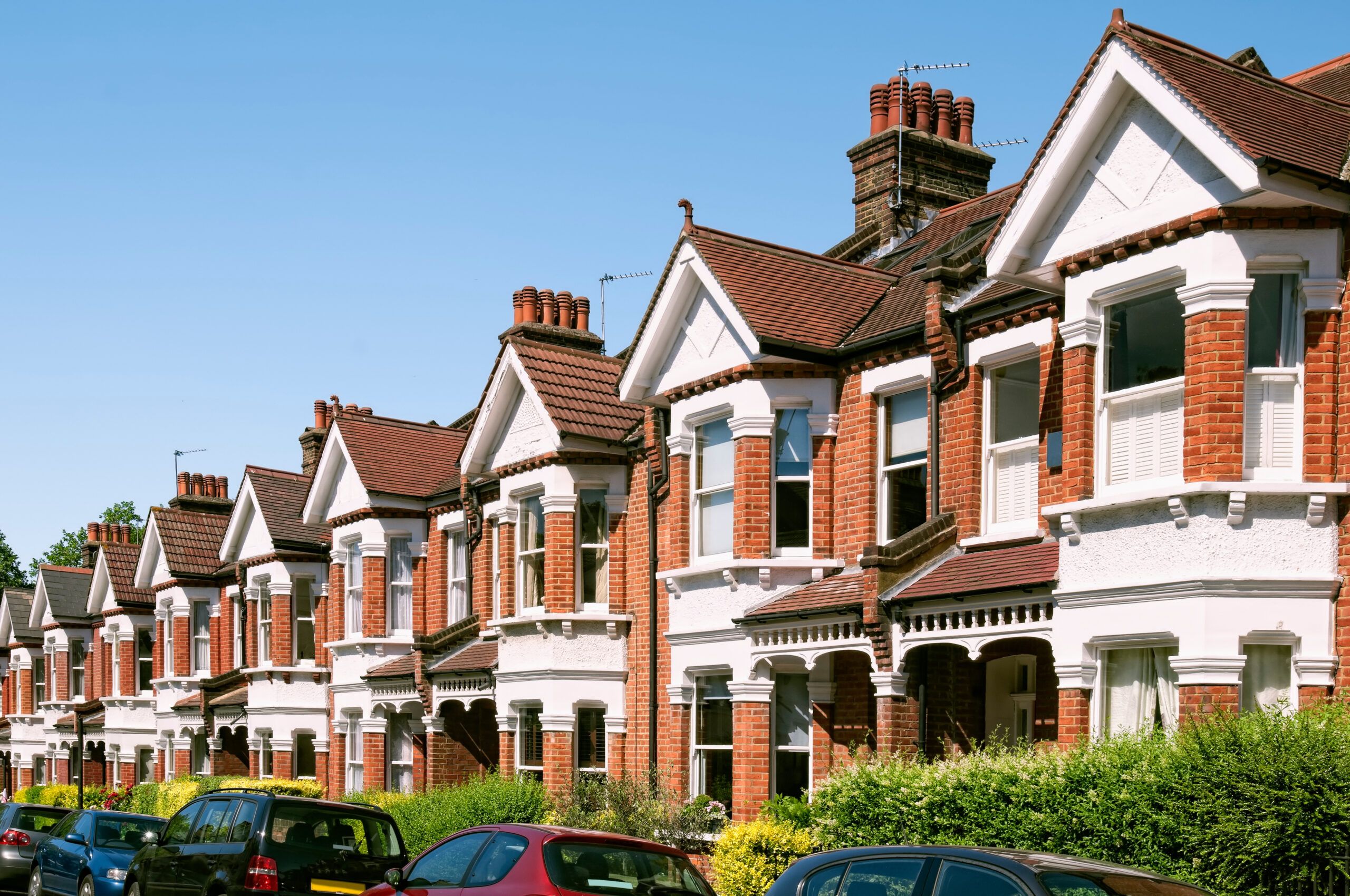Labour’s London Housing Gambit: Unpacking the Plan to Tackle the Capital’s Crisis Amidst Ambitious Targets and Contentious Reforms
In a significant policy shift, London Mayor Sadiq Khan has unveiled Labour’s new and controversial strategy to tackle the city’s severe housing crisis. At the heart of the “Towards a new London Plan” initiative is a radical proposal: to explore building homes on carefully selected parts of London’s Green Belt for the first time.
Citing the urgent need for affordable housing and arguing that much of the Green Belt is inaccessible “grey belt” land, the plan aims to meet a new target of 88,000 homes per year. The move has ignited fierce debate, drawing criticism from environmental groups and political opponents who question its effectiveness and timing, setting the stage for a defining battle over the future of London’s landscape.

Introduction: A Glimpse into Labour’s Housing Remedy for London
London’s housing crisis is severe, with soaring rents, elusive homeownership, and rising homelessness, causing profound socio-economic damage. A recent YouTube video, “Labour’s New Plan to Fix London’s Housing Crisis,” superficially touches on freeing up “low-quality green belt land” but admits “bolder action still” is needed, before pivoting to a sponsorship. This highlights a potential communication strategy using social media for broad reach rather than detailed policy, necessitating a look at wider pronouncements to understand Labour’s full strategy.
The National Blueprint: Labour’s Ambitions to Reshape UK Housing
Labour nationally pledges 1.5 million new homes next parliament, a target requiring a significant acceleration in building amidst current slumps and potential funding challenges.
Reforming the Planning Landscape: The “Grey Belt” and Beyond
Central to this is planning reform. While maintaining a “brownfield first” principle, Labour acknowledges its insufficiency, introducing the “Grey Belt” initiative to release low-quality or previously developed Green Belt land (e.g., disused car parks) for housing. Over 11,000 such sites could yield 100,000-200,000 homes, subject to “golden rules” including 50% affordable housing, new public services, and biodiversity net gain. The 35% “urban uplift” in housing targets has been abolished, shifting pressure from some large cities like London (whose target falls from c.99,000 to c.80,000 annually, still above delivery) to surrounding areas, necessitating “grey belt” and new town strategies. National Development Management Policies (NDMPs) will aim to streamline Green Belt development.
Compulsory Purchase Order (CPO) Reform: A Tool for Acceleration?
CPO reforms aim to allow land acquisition at “fair compensation” based on existing use value, not “hope value” from potential planning permission, to capture land value uplift for public benefit. Legislative proposals seek to streamline CPO processes.
The Vision for New Towns and Large-Scale Communities
A series of new towns and large-scale communities are planned, with an expert panel to identify sites and national standards for design. Development Corporations are being strengthened to deliver these projects, including on greenfield sites and as urban extensions.
London in Focus: Tailoring the National Strategy for the Capital
London faces a staggering target of 88,000 new homes annually for a decade, far exceeding current delivery (around 40,000) and Mayor Sadiq Khan’s previously missed target of 52,000. Affordable housing starts in London have recently plummeted.
Mayor Sadiq Khan’s “Radical Shift”: The New London Plan and Green Belt Release
On May 9, 2025, Mayor Khan announced City Hall will explore releasing parts of London’s Green Belt, arguing current prohibitions are “wrong, out-of-date and simply unsustainable”. The focus is on “grey belt” land, with development conditional on maximising affordable housing, high-quality design, biodiversity net gain, and improved public access. This is part of the ‘Towards a new London Plan’ consultation (May-June 2025), with a draft plan expected in 2026 and adoption by 2027/2028. This shift likely reflects national Labour pressure and past missed targets.
Specific Commitments for London
The national 50% affordable housing rule on “grey belt” applies, with the Mayor aiming to bolster this. London expects a share of the £2 billion national fund for 18,000 new social/affordable homes. Large-scale developments (10,000+ homes) on London’s Green Belt, potentially new towns, are being considered.
Infrastructure as a Backbone: Connecting New Communities
New housing will be concentrated near transport links, with proposed upgrades to the Bakerloo line, Overground, DLR, and trams. An “infrastructure first” approach is advocated.
Key Architects and Voices: Who is Driving the Housing Agenda?
National Leadership
Prime Minister Keir Starmer‘s government set the 1.5 million homes target. Chancellor Rachel Reeves outlined fiscal measures, including £5 billion towards the target and £2 billion for 18,000 social/affordable homes, but faces pressure for more funds. Housing Secretary Angela Rayner champions the target and reportedly seeks alternative tax strategies, amidst speculation about her housing portfolio. Minister of State for Housing Matthew Pennycook is steering legislative changes, including CPO reform and strengthening Development Corporations.
London Leadership
Mayor Sadiq Khan leads the “New London Plan” and the Green Belt release strategy, emphasizing the crisis’s severity. He faces scrutiny over past missed targets and falling affordable starts.
Navigating the Maze: Hurdles, Criticisms, and the Road Ahead
Delivery Dilemmas: Can the Targets Be Met?
Scepticism surrounds the feasibility of the 1.5 million national and 88,000 London annual home targets due to past underperformance and current slumps. Funding, planning system capacity (shortage of 3,100 planning officers between 2010-2020), construction industry constraints, and developer viability (balancing affordable housing mandates with CPO reforms) are major concerns.
Environmental and Community Impact: The Green Belt Battleground
Green Belt development, even “grey belt,” faces strong opposition from groups like CPRE due to environmental concerns. Local opposition and legal challenges are likely risks. Ensuring new towns are well-serviced sustainable communities is critical.
Political and Policy Realities
The London Plan adoption (2027/2028) and new town development involve long timelines. Effective inter-governmental cooperation and public support are vital. Other policies (e.g., immigration, economic conditions) could impact plans.
Lessons from the Past: Scrutiny of Delivery Records
Mayor Khan’s previously missed targets and alleged “accounting tricks” with affordable housing numbers, alongside slow London Plan revisions, invite scrutiny.
Conclusion: The Future of London’s Skyline and Affordability
Labour’s strategy involves ambitious national targets, sweeping planning reforms (“Grey Belt,” CPO changes, new towns), and London-specific measures like Green Belt release. It’s a balancing act between housing need and environmental/community concerns.
Success could alleviate London’s housing shortage but faces significant hurdles in funding, delivery capacity, and political opposition. Key questions revolve around financial investment, industry capacity, “grey belt” implementation, sustainability of new communities, and tangible impact on affordability. The plan is a major political gamble, with long-term consequences for London and the Labour government’s credibility. The risk of land speculation also needs careful management. The outcome will test this model of state intervention in housing.
Check out this video for more information:
Homes2let offers a property management service that reduces the landlord burden, with an added benefit…
As a landlord, you have enough to deal with without having deal with deposit claims. So why not hand over to a property management service, but one with a clear added benefit?
The homes2let guaranteed rent scheme guarantees rental payments, even when the property is untenanted, as well as taking all the hassle of property management off your shoulders too.
Interested to discover more? You are welcome to get in touch with our expert team to discover how we can make your life as a landlord more of a breeze.

Riz is the founder of homes2let and has been in real estate for over twenty years. He has a background in economics and is a real estate developer and buy to let investor.
Free, no obligation 15min call with Riz – Book Now
Related Insights

How to Prevent Rental Void Periods
As a landlord, you will naturally want to keep void periods to a minimum. Whilst they are an inevitable part of being a private landlord, there are steps you can take to reduce the impact and avoid the costs of extended untenanted periods. From guaranteed letting income schemes, to tips on attracting the right tenants, it’s all covered in this article.

UK Housing Market Predictions for 2025: Crash or Boom?
Despite a year of economic uncertainty and rising mortgage rates, the UK housing market has defied expectations, demonstrating remarkable resilience in 2024. But what does the future hold? Experts at Savills predict a positive outlook for 2025, with house prices expected to rise by up to 4% by year's end. This optimistic forecast is fueled by falling inflation, anticipated reductions in interest rates, and continued strong demand, particularly from first-time buyers. However, the market isn't without its challenges. Affordability remains a key concern, and regional variations are expected to play a significant role, with the North and Scotland potentially outperforming the South...

Mortgage Market Reacts as Bank of England Cuts Rates to 4.5%
Breaking News: The Bank of England has lowered rates to 4.5%. This could significantly impact the housing market. We break down what it means for borrowers and what to expect next.






